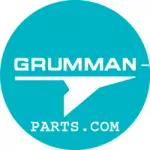Roscoe’s history of hacking websites is something he has done before.
Ask him why he is banned from the AYA.org now GOPA.
Roscoe has no qualms about hacking a website’s server folders when it serves his needs. We will be purchasing plugin for the website to address this particular type of hack.
But in the meantime I have to focus my efforts on customer service and growing our successful business: https://grumman-parts.com. Jeff
Sorry for the inconvenience.
You can obtain this content legitimately. Complete this information form and I will send you the documents you request. Or Send me an email to sales@grumman-parts.com
